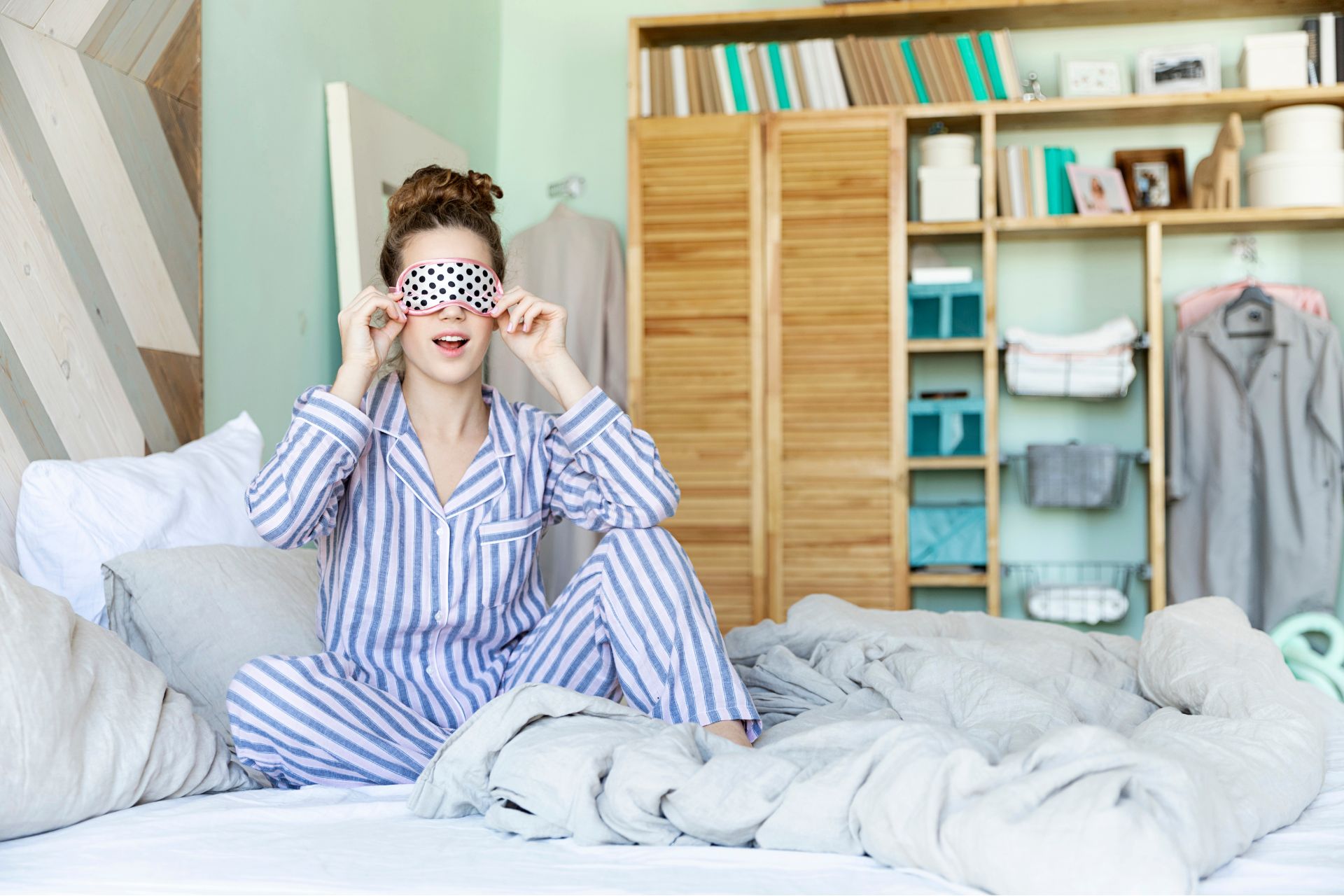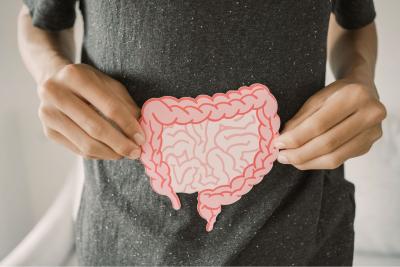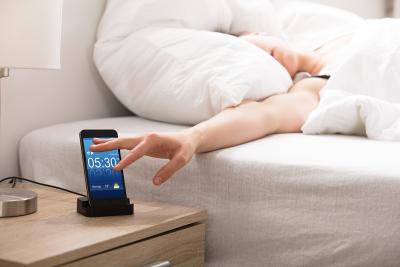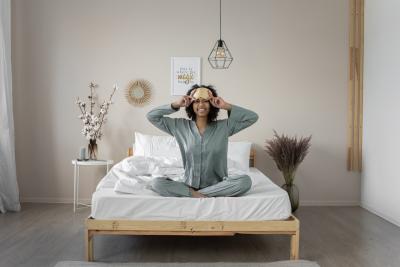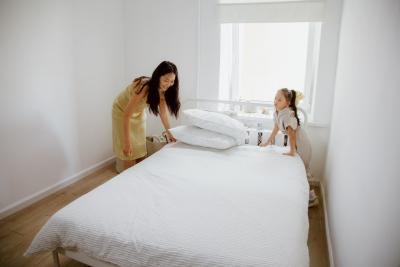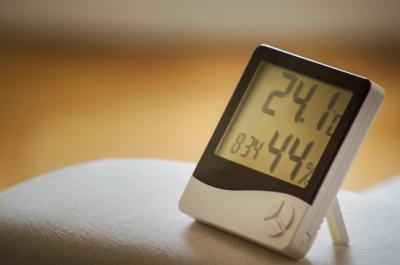We all have our favourite pair of pyjamas; some like them too much, even wearing them around the house or wearing the same pair at night for a week. But if you wear your PJs for an extended amount of time and stuff them underneath your pillow where no air can get to them, are you putting yourself at risk of infections?
To find out, we looked at some of the most common places people store their pyjamas (including under or on top of their pillow, as well as the foot of the bed) and spoke to Bella von Nesselrode, MCMA (Member of the Complementary Medical Association) and Founder of Children of Earth Skincare to reveal what else you could be sleeping with when wearing your pyjamas.
You could sleep with thousands of germs, bacteria and dead skin if you change your pyjamas once a week.
The average person could go to bed with thousands of germs and bacteria. Previous reports have highlighted that people change their pyjamas once a week, with the average wear time between two and four days.
Bella said: "Research has shown that repair of our skin cells peaks at night. A tiny system inside each skin cell knows when it's light or dark and starts acting accordingly. This includes water loss, which means that new ones replace old cells. And where do the water microorganisms end up? Of course, within our sheets."
Most of these microorganisms are harmless, but when they get in the wrong place, they can cause problems. Many people carry Staph, E. coli, and sometimes MRSA, which can cause nasty infections if they get into cuts, not to mention eye infections from transferring to the pillow.

You can be exposed to conjunctivitis when keeping pyjamas near your pillow
We carry many different types of bacteria on our skin, so if we constantly wear the same pair of PJs and place them on or under our pillow, any germs lingering on our skin will transfer to our PJs and then to the pillow. This could mean that usually, safe bacteria could get into places where they shouldn't be, like our eyes.
Most of us have Staphylococcus bacteria on our skin; however, if Staph gets into our eyes, it can infect the tear duct, eyelid, conjunctiva, cornea, and more. We all have E. coli in our bowels, which can end up on our sheets, pillows, and PJs. But, if this gets into our eyes from the PJs on our pillows, we could get an unpleasant eye infection such as conjunctivitis, keratitis, and cellulitis.

We sweat the same amount as a large McDonald's Coke at night, risking acne if our PJs aren’t stored properly
Bella advises that people should air their PJs after sleep instead of stuffing them under bedding or pillows, saying, "A 2023 study showed that underwear (which pyjamas effectively are) were found to harbour a unique cluster of bacteria, such as Corynebacterium and Clostridiales. These can cause wound infections in some individuals.
"Therefore, a potential skin irritation or infection could occur in the event of acne sufferers or someone with any small openings on the skin. So, it makes sense to air pyjamas away from the bed. This could help prevent the transfer and growth of these bacteria to the head and face area associated with the pillow and help balance the skin's microbiome better during the night."
We sweat between 500ml and 700ml at night, equivalent to a large McDonald's soft drink. But did you know bacteria thrive in damp and dark conditions? So, if your PJs are damp, placing them underneath bedding where it's dark will keep the area damp and allow the bacteria and mould to grow.
You could also be running the risk of acne. Many people wear their PJs for a whole week, so if we sweat 500ml a night, you could have up to 3.5 litres of sweat lingering on them. That's the capacity of an average-sized slow cooker!
Bella said, "A build-up from sweat, dirt, oil and bacteria can cause a localised breakout from clogged pores, where bacteria from pyjamas or the previous night's sleep can affect the skin due to the pressure of the face on the pillow (commonly referred to as acne mechanica).
"So measures to reduce an excess of this bacteria coming into contact with any openings in the skin are sensible, and for those who sweat a lot, it could be prudent (and better for the skin's microbiome!) to keep pyjamas to air elsewhere, due to extra bacterial growth from higher moisture levels."

4 tips for a hygienic bedroom
So, if you don't want to sleep in a bed full of germs and harmful bacteria, what should you do to get hygienic sleep?
1. Air out bedding, pillows and PJs
Since we sweat up to 700ml at night, removing moisture from our bedding and PJs is essential. Open the window in the morning to allow stagnant air to escape and to air out the bedding. Or go one step further and hang bedding, pillows, and PJs on the line outside, or use a clothes dryer inside if it's a rainy day. Doing so will remove the dampness, and the air will prevent a build-up of bacteria.
2. Wash your pyjamas after every 2 or 3 wears
Oils, sweat, bacteria, and dead skin cells can build up in pyjamas, so it's a good idea to wash them every two or three wears; otherwise, you could cause skin infections. Some people wash their PJs after every wear; however, that's unnecessary. Just air out your pyjamas each morning to freshen them for the night.
3. Wash bedding weekly
As with pyjamas, bacteria and sweat can build up in your bedding, and tens of thousands of dust mites could live in your mattress and bedding. To remove all the dirt and grime, wash your bedding on a hot wash with detergent.
4. Vacuum your mattress every six months
Dirt, dead skin cells, and dust mites build up in a mattress over time. Those dust mites leave behind their dead bodies, faeces, and saliva, which can cause allergy flare-ups and skin irritation. Vacuuming your mattress every six months will help prevent the nasty build-up.
For more information, you can also read our guide on how to clean your mattress.


